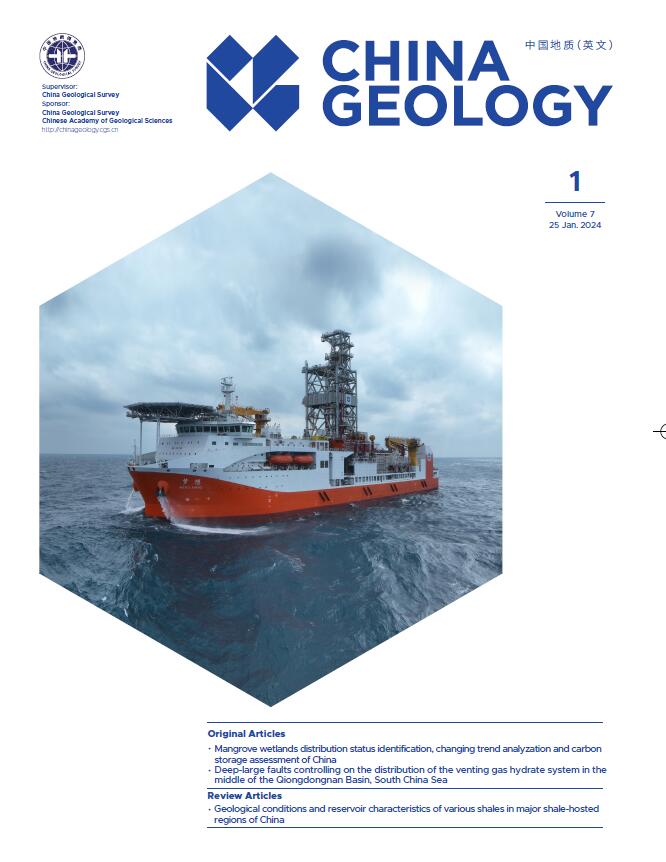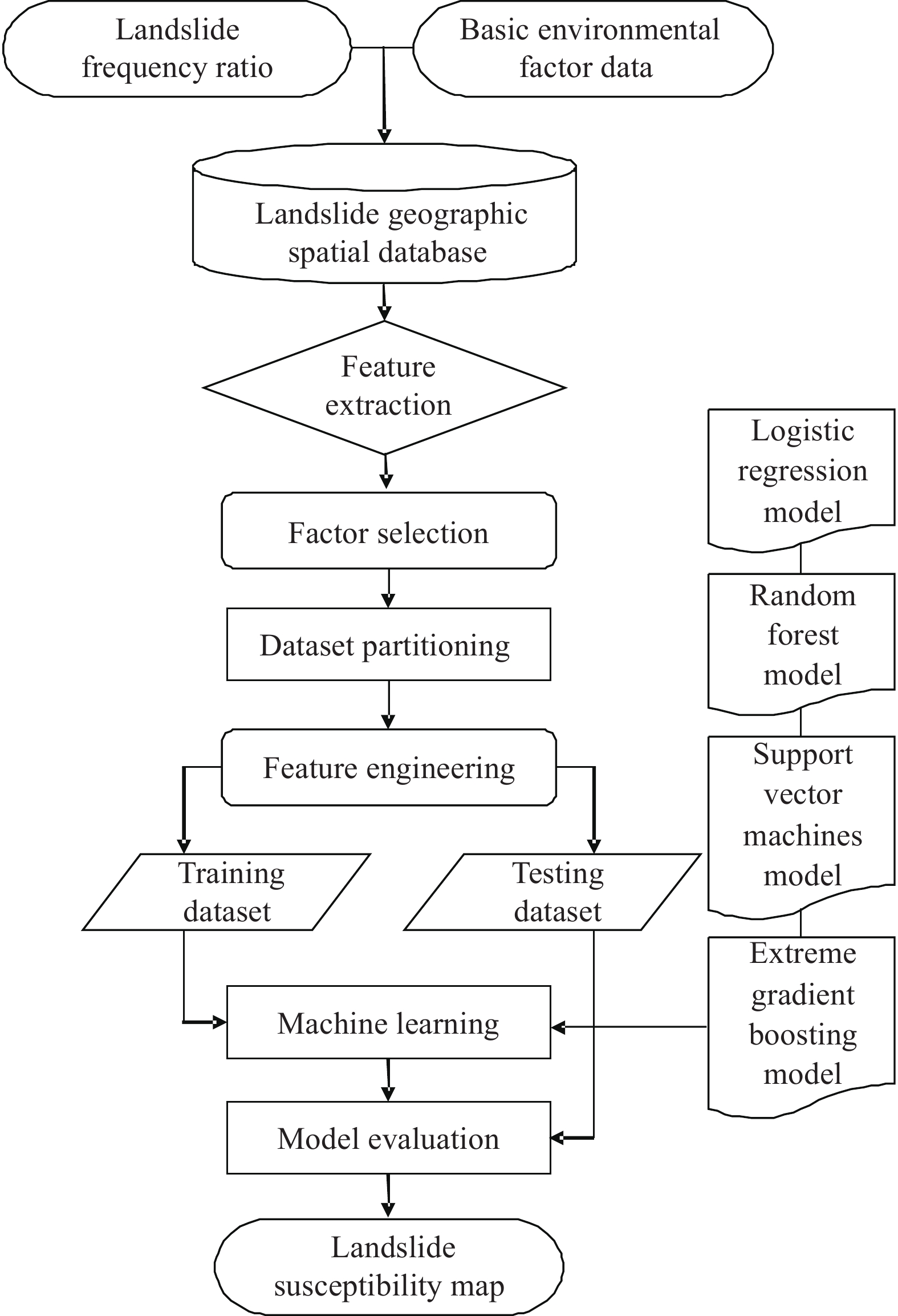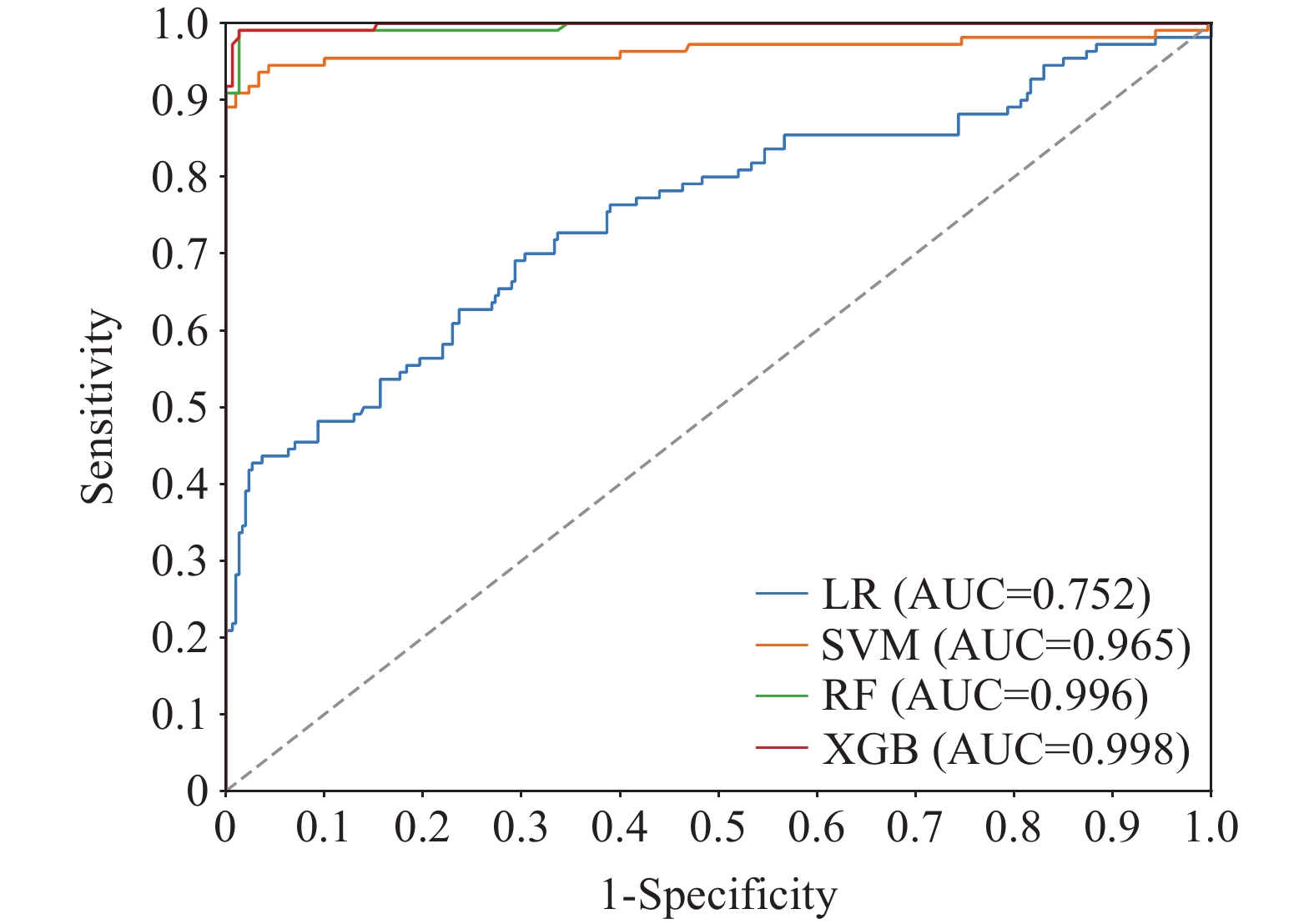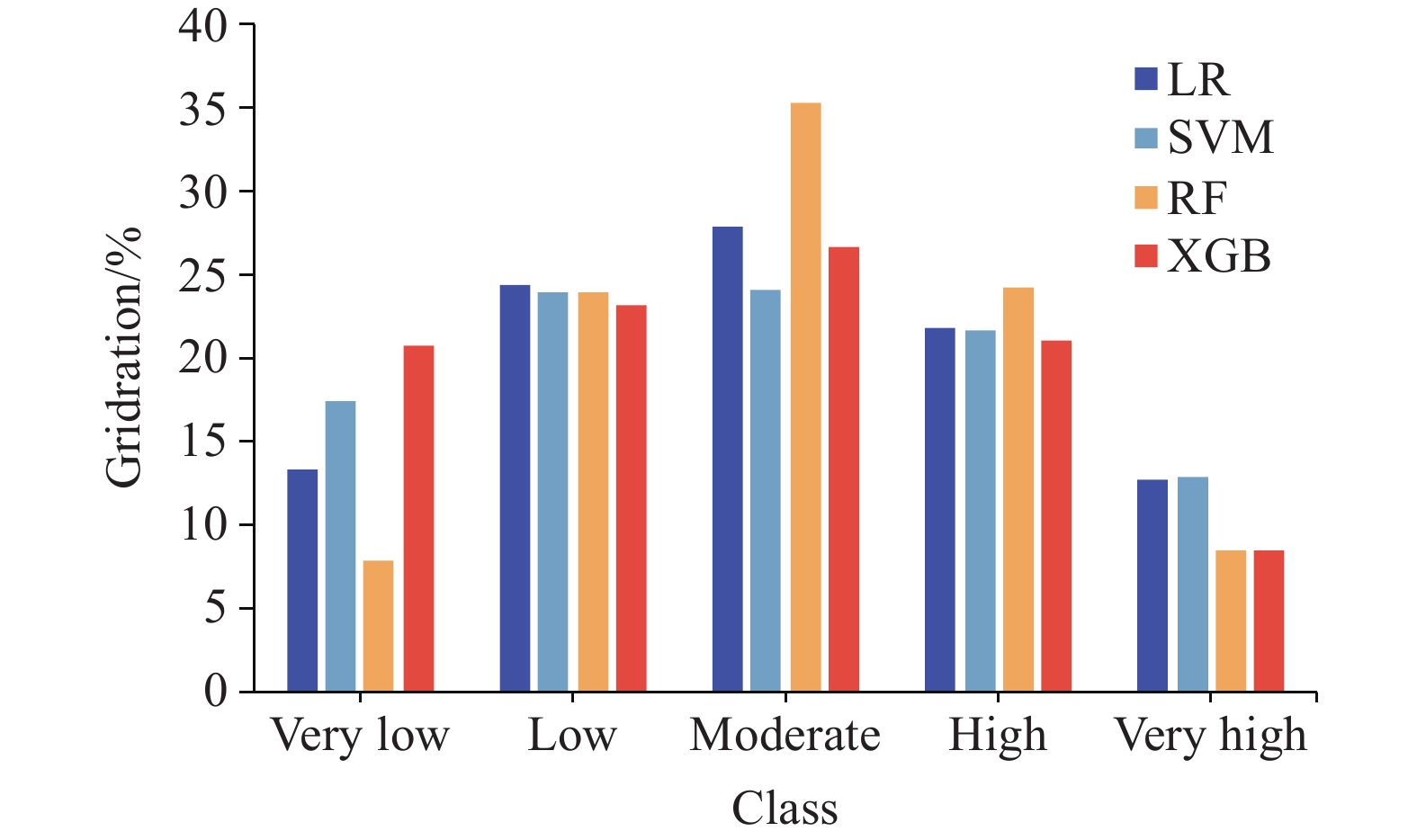| Citation: | Ao Zhang, Xin-wen Zhao, Xing-yuezi Zhao, Xiao-zhan Zheng, Min Zeng, Xuan Huang, Pan Wu, Tuo Jiang, Shi-chang Wang, Jun He, Yi-yong Li, 2024. Comparative study of different machine learning models in landslide susceptibility assessment: A case study of Conghua District, Guangzhou, China, China Geology, 7, 104-115. doi: 10.31035/cg2023056 |
Comparative study of different machine learning models in landslide susceptibility assessment: A case study of Conghua District, Guangzhou, China
-
Abstract
Machine learning is currently one of the research hotspots in the field of landslide prediction. To clarify and evaluate the differences in characteristics and prediction effects of different machine learning models, Conghua District, which is the most prone to landslide disasters in Guangzhou, was selected for landslide susceptibility evaluation. The evaluation factors were selected by using correlation analysis and variance expansion factor method. Applying four machine learning methods namely Logistic Regression (LR), Random Forest (RF), Support Vector Machines (SVM), and Extreme Gradient Boosting (XGB), landslide models were constructed. Comparative analysis and evaluation of the model were conducted through statistical indices and receiver operating characteristic (ROC) curves. The results showed that LR, RF, SVM, and XGB models have good predictive performance for landslide susceptibility, with the area under curve (AUC) values of 0.752, 0.965, 0.996, and 0.998, respectively. XGB model had the highest predictive ability, followed by RF model, SVM model, and LR model. The frequency ratio (FR) accuracy of LR, RF, SVM, and XGB models was 0.775, 0.842, 0.759, and 0.822, respectively. RF and XGB models were superior to LR and SVM models, indicating that the integrated algorithm has better predictive ability than a single classification algorithm in regional landslide classification problems.
-

-
References
Bennett ND, Croke BF, Guariso G, Guillaume JH, Hamilton SH, Jakeman AJ, Marsili-Libelli S, Newham LT, Norton JP, Perrin C, Pierce SA, Robson B, Seppelt R, Voinov AA, Fath BD, Andreassian V. 2013. Characterising performance of environmental models. Environmental modelling & software, 40, 1–20. doi: 10.1016/j.envsoft.2012.09.011 Cabrera AF. 1994. Logistic regression analysis in higher education: An applied perspective. In: Higher Education: Handbook of Theory and Research, 10, 225–256. Chen W, Chai HC, Zhao Z, Wang Q, Hong H. 2016. Landslide susceptibility mapping based on GIS andsupport vector machine models for the Qianyang County, China. Environmental Earth Sciences, 75(6), 1–13. doi: 10.1007/s12665-015-5093-0 Chen W, Chen X, Peng J B, Panahi M, Lee S. 2021. Landslide susceptibility modeling based on ANFIS with teaching-learning-based optimization and satin bowerbird optimizer. Geoscience Frontiers, 12(1), 93–107. doi: 10.1016/j.gsf.2020.07.012 Dou J, Yamagishi H, Pourghasemi HR, Yunus AP, Song X, Xu Y, Zhu Z. 2015. An integrated artificial neural network model for the landslide susceptibility assessment of Osado Island, Japan. Natural Hazards, 78(3), 1749–1776. doi: 10.1007/s11069-015-1799-2 Dou J, Yunus A P, Bui D T, Merghadi A, Sahana M, Zhu ZF, Chen, CW, Khosravi K, Yang Y, Pham BT. 2019. Assessment of advanced random forest and decision tree algorithms for modeling rainfall-induced landslide susceptibility in the Izu-Oshima Volcanic Is-land, Japan. Science of the Total Environment, 662, 332–346. doi: 10.1016/j.scitotenv.2019.01.221 Feng HJ, Zhou AG, Yu JY, Tang XM, Zheng JL, Chen XX, You SY. 2016. A comparative study on Plum-Rain-Triggered landslide susceptibility assessment models in West Zhejiang Province. Earth Science, 41(3), 403–415 (in Chinese with English abstract). doi: 10.3799/dgkx.2016.032 Guzzetti F, Mondini AC, Cardinali M, Fiorucci F, Santangelo M, Chang KT. 2012. Landslide inventory maps: New tools for an old problem. Earth-Science Reviews, 112(1–2), 42–66. doi: 10.1016/j.earscirev.2012.02.001 Hu T, Fan X, Wang S, Guo ZZ, Liu AC, Huang FM. 2020. Landslide susceptibility evaluation of Sinan County using logistics regression model and 3S technology. Bulletin of Geological Science and Technology, 39(2), 113–121 (in Chinese with English abstract). doi: 10.19509/j.cnki.dzkq.2020.0212 Huang FM, Chen JW, Du Z, Yao C, Huang JS, Jiang QH, Chang ZL, Li S. 2020. Landslide susceptibility pre-diction considering regional soil erosion based on machine-learning models. ISPRS International Journal of Geo-Information, 9(6), 377. doi: 10.3390/ijgi9060377 Huang FM, Hu SY, Yan XY, Li M, Wang JY, Li WB, Guo ZZ, Fan WY. 2022. Landslide susceptibility prediction and identification of its main environmental factors based on machine learning models. Bulletin of Geological Science and Technology, 41(2), 79–90 (in Chinese with English abstract). doi: 10.19509/j.cnki.dzkq.2021.0087 Huang Y, Zhao L. 2018. Review on landslide susceptibility mapping using support vector machines. Catena, 165, 520–529. doi: 10.1016/j.catena.2018.03.003 Jia YF, Wei WH, Chen W, Yang QZ, Sheng YF, Xu GL. 2023. Landslide susceptibility assessment based on the SOM-I-SVM model. Hydrogeology & Engineering Geology, 50(3), 125–137. doi: 10.16030/j.cnki.issn.1000-3665.202206041 Kanungo DP, Arora MK, Sarkar S, Gupta RP. 2006. A comparative study of conventional, ANN black box, fuzzy and combined neural and fuzzy weighting procedures for landslide susceptibility zonation in Darjeeling Himalayas. Engineering geology, 85(3–4), 347–366. doi: 10.1016/j.enggeo.2006.03.004 Lee S, Min K. 2001. Statistical analysis of landslide susceptibility at Yongin, Korea. Environmental geology, 40(9), 1095–1113. doi: 10.1007/s002540100310 Li JL, Ma DH, Wang W. 2016. Assessment of potential seismic landslide hazard based on evidence theory and entropy weight grey incidence. Journal of Central South University (Science and Technology), 47(5), 1730–1736 (in Chinese with English abstract). doi: 10.11817/j.issn.1672-7207.2016.05.036 Liu HH. 2012. The assessment of geohazard danger in Wenchuan County based on RS and GIS. Geology in China, 39(1), 243–251 (in Chinese with English abstract). Miao WD. 2003. Time prediction study on occurring of landslides in Bailuyuan, Xi'an. Northwestern Geology, 36(4), 90–95 (in Chinese with English abstract). Paraskevas T, Ioanna I. 2016. Landslide susceptibility mapping using a modified decision tree classifier in the Xanthi Perfection, Greece. Landslides, 13(2), 305–320. doi: 10.1007/s10346-015-0565-6 Peng CYJ, Lee K, Ingersoll GM. 2002. An introduction to logistic regression analysis and reporting. The Journal of Educational Research, 96(1), 3–14. doi: 10.1080/00220670209598786 Pham BT, Tien Bui D, Dholakia MB, Prakash I, Pham, HV. 2016. A comparative study of least square support vector machines and multiclass alternating decision trees for spatial prediction of rainfall-induced landslides in a tropical cyclones area. Geotechnical and Geological Engineering, 34, 1807–1824. doi: 10.1007/s10706-016-9990-0 Pham BT, Tien Bui D, Indra P, Dholakia M. 2015. Landslide susceptibility assessment at a part of Uttarakhand Himalaya, India using GIS-based statistical approach of frequency ratio method. nternational Journal of Engineering Research and Technology, 4(11), 338–344. doi: 10.17577/IJERTV4IS110285 Reichenbach P, Rossi M, Malamud BD, Mihir M, Guzzetti F. 2018. A review of statistically-based landslide susceptibility models. Earth-Science Reviews, 180, 60–91. doi: 10.1016/j.earscirev.2018.03.001 Tien Bui D, Pradhan B, Lofman O, Revhaug I. 2012. Landslide susceptibility assessment in Vietnam using support vector machines, decision tree, and Naive Bayes models. Mathematical Problems in Engineering, 1–26. doi: 10.1155/2012/974638. Tien Bui D, Tuan TA, Klempe H, Pradhan B, Revhaug I. 2016. Spatial prediction models for shallow landslide hazards: A comparative assessment of the efficacy of support vector machines, artificial neural networks, kernel logistic regression, and logistic model tree. Landslides, 13, 361–378. doi: 10.1007/s10346-015-0557-6 Tsangaratos P, Ilia I, Hong H, Chen W, Xu C. 2017. Applying information theory and GIS-based quantitative methods to produce landslide susceptibility maps in Nancheng County, China. Landslides, 14(3), 1091–1111. doi: 10.1007/s10346-016-0769-4 Wang T, Liu JM, Li ZT, Xin P, Shi JS, Wu SR. 2021. Seismic landslide hazard assessment of China and its impact on national territory spatial planning. Geology in China, 48(1), 22–39 (in Chinese with English abstract). doi: 10.12029/gc20210102 Xia H, Yin KL, Liang X, Ma F. 2018. Landslide susceptibility assessment based on SVM-ANN Models: A case study for Wushan County in the Three Gorges Reservoir. The Chinese Journal of Geological Hazard and Control, 29(5), 13–19 (in Chinese with English abstract). doi: 10.16031/j.cnki.issn.1003-8035.2018.05.03 Xiong XH, Wang CL, Bai YJ, Tie YB, Gao YC, Li GH. 2022. Comparison of landslide susceptibility assessment based on multiple hybrid models at county level: A case study for Puge County, Sichuan Province. The Chinese Journal of Geological Hazard and Control, 33(4), 114–124. doi: 10.16031/j.cnki.issn.1003-8035.202202052 Yang DH, Fan W. 2015. Zoning of probable occurrence level of geological disasters based on ArcGIS——A case of Xunyang. The Chinese Journal of Geological Hazard and Control, 26(4), 82–86, 93 (in Chinese with English abstract). doi: 10.16031/j.cnki.issn.1003-8035.2015.04.14 Zêzere JL, Pereira S, Melo R, Oliveira SC, Garcia RAC. 2017. Mapping landslide susceptibility using data-driven methods. Science of the Total Environment, 589, 250–267. doi: 10.1016/j.scitotenv.2017.02.188 Zhang J, Yin KL, Wang JJ, Liu L, Huang FM. 2016. Study on landslide susceptibility evaluation for Wanzhou district of Three Gorges Reservoir. Chinese Journal of Rock Mechanics and Engineering, 35(2), 284–296 (in Chinese with English abstract). doi: 10.13722/j.cnki.jrme.2015.0318 -
Access History

-
Figure 1.
Location of the study area (a) and geographical location of the study area and historical landslide distribution map (b).
-
Figure 2.
Flowchart of the machine learning model for landslide susceptibility evaluation.
-
Figure 3.
Basic environmental factors of landslide susceptibility assessment.
-
Figure 4.
Correlation analysis of evaluation factors of heat map.
-
Figure 5.
Analysis of the ROC curve of different landslide models using training dataset.
-
Figure 6.
Analysis of the ROC curve of different landslide models using testing dataset.
-
Figure 7.
Landslide susceptibility maps using different landslide models.
-
Figure 8.
Typical landslides verification.
-
Figure 9.
Different classes distribution of grid ratio on slope map.





 DownLoad:
DownLoad:







